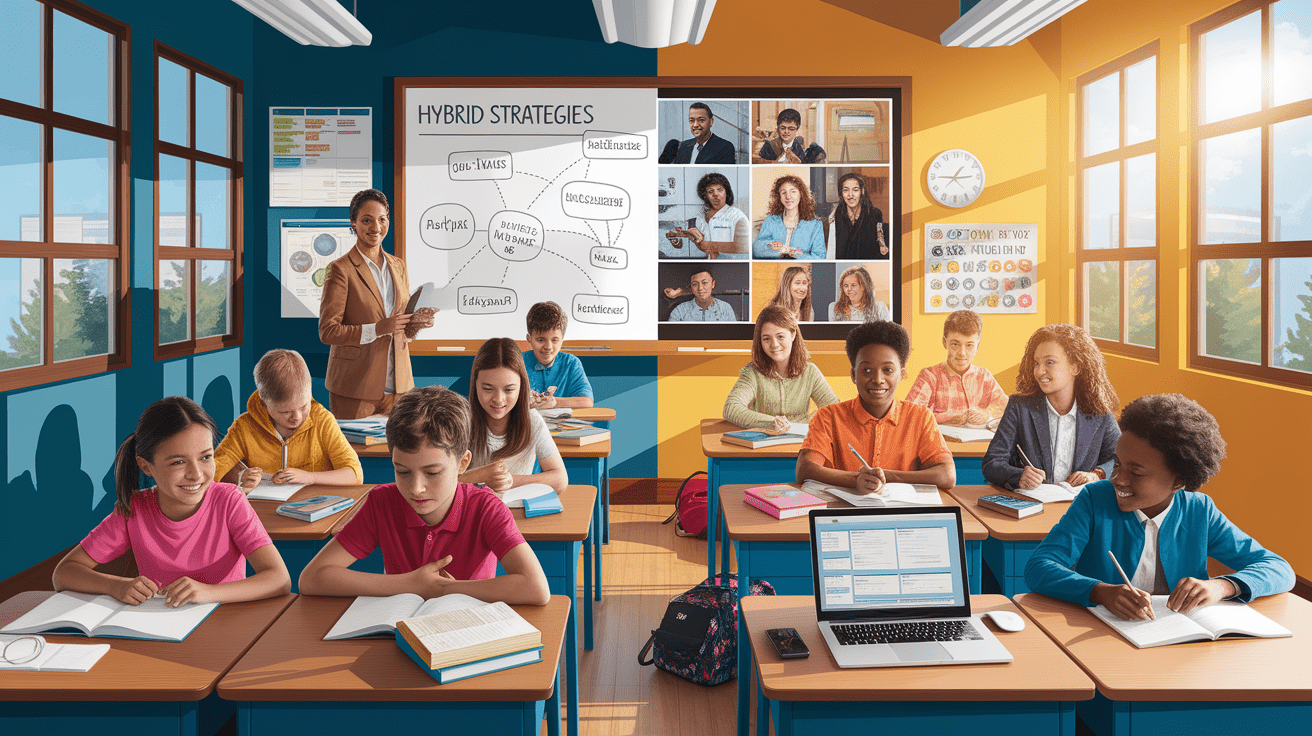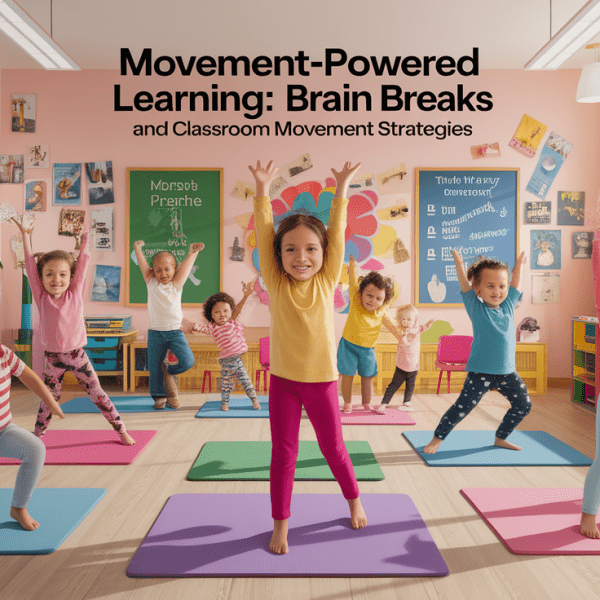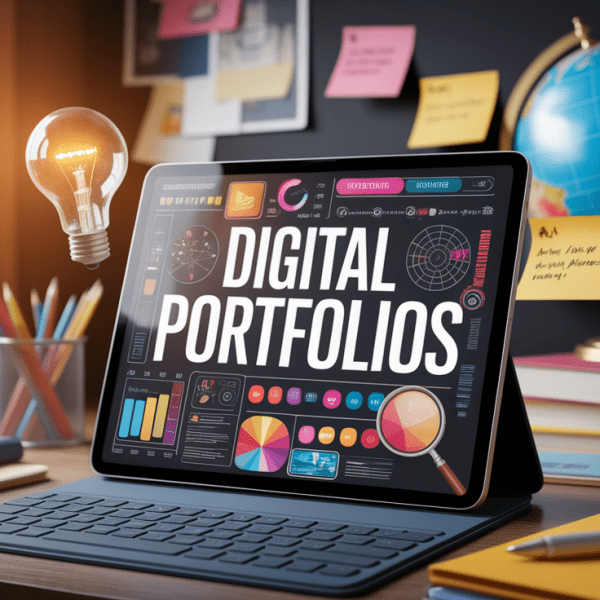Jumpstart Your Hybrid Teaching
Ready to dive into the exciting world of hybrid teaching? Think of it as blending the sparkle of face-to-face learning with the flexibility of online education. At its core, hybrid learning integrates both in-person instruction and virtual classroom elements to create a seamless and engaging experience for your students.
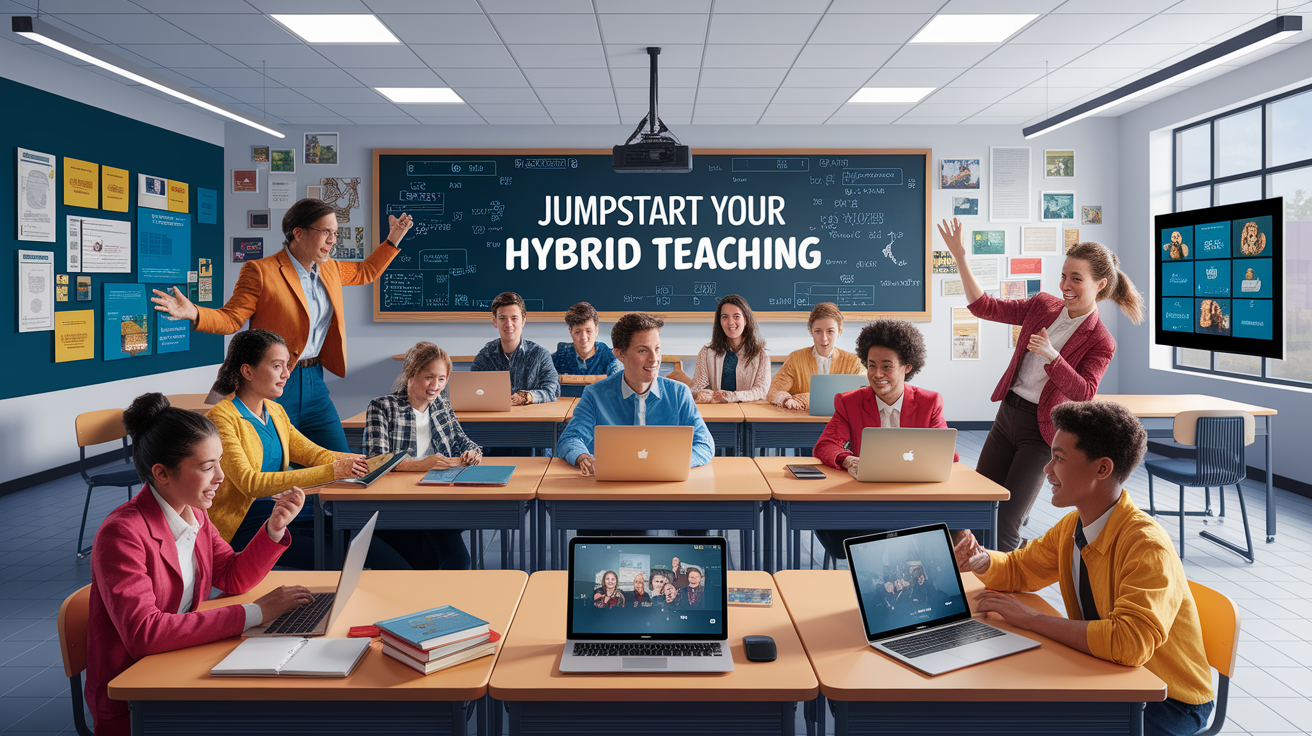
The magic lies in combining the immediacy and relational power of the classroom with the accessibility and adaptability of digital tools. This teaching model isn’t just a workaround—it’s a dynamic pedagogical approach that can meet diverse student needs while maximizing student engagement. Whether you’re teaching high school science or university literature, hybrid lesson planning opens doors to new ways of connecting, communicating, and collaborating with learners.
Balancing Online and In-Person Elements
The key to harmony in hybrid teaching is intentionally deciding what belongs online and what shines brightest in person. According to hybrid learning strategies from Ohio State University, foundational content like reading assignments, lecture videos, and formative assessments fits perfectly into asynchronous online delivery. This allows students to digest core concepts at their own pace.

On the other hand, reserve real-time activities for in-person instruction. Group projects, debates, and hands-on practice thrive during synchronous learning moments in the classroom. If class sizes are large, staggered sessions can help maintain personalized learning while ensuring room for active engagement—imagine smaller groups that meet on different days, allowing deeper discussion and collaboration.
- Use online modules for theory and background readings.
- Design in-person sessions for active, collaborative learning activities.
- Leverage interactive digital resources to bridge the two spaces.
Designing Cohesive Hybrid Lessons
A strong hybrid lesson feels like a single, unified experience—not two disjointed classes. This requires thoughtful instructional design, aligning lesson objectives across both modalities. The ViewSonic guide to hybrid teaching strategies emphasizes planning intentional transitions between online and offline work to preserve flow.
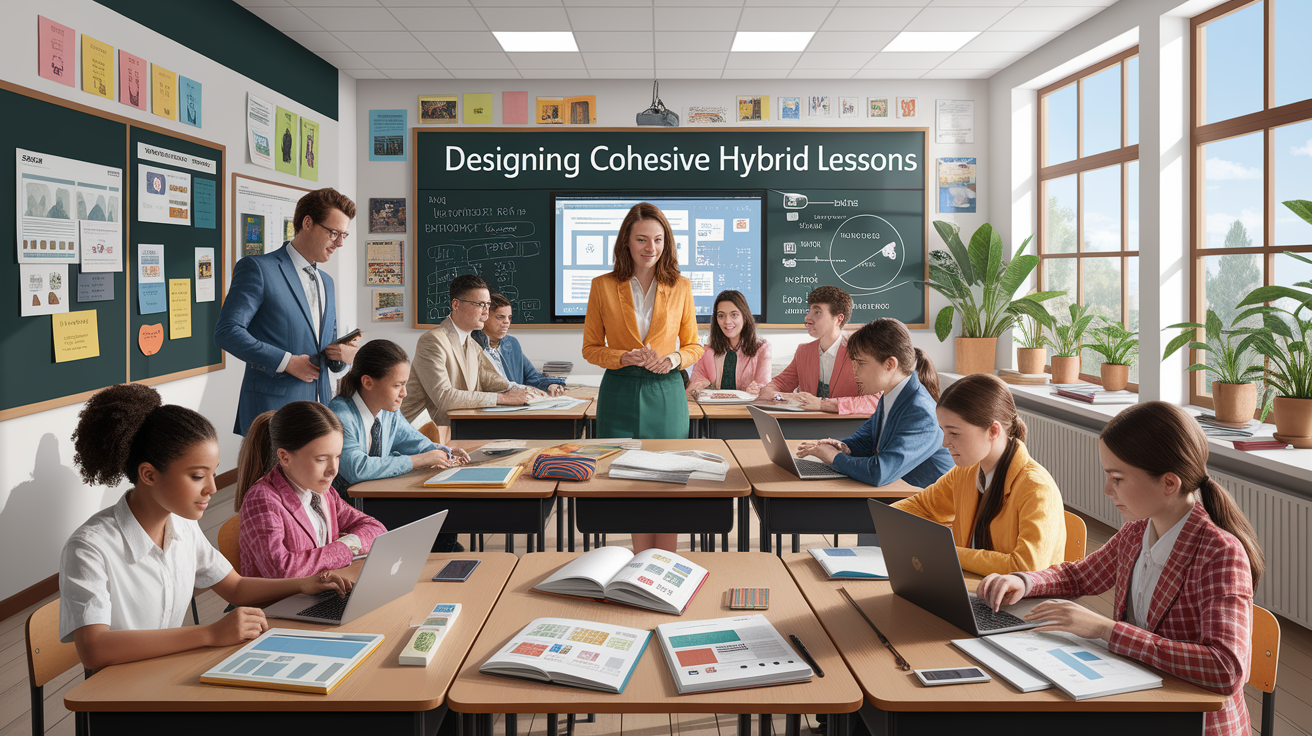
For example, students might watch a pre-recorded lecture in the learning management system, complete an online quiz to check understanding, then participate in a classroom lab that applies those concepts. Every activity should connect to your learning outcomes, whether delivered remotely or in person. Supporting materials—like shared Google Docs or discussion forums—can keep the conversation alive across environments.
- Establish clear, measurable goals for each lesson.
- Map which objectives are best met online versus in-person.
- Integrate technology tools strategically to support transitions between learning spaces.
Assessing Student Participation and Progress
Assessments in hybrid settings must fairly reflect learning for all students, whether they engage on campus or remotely. As highlighted in Class.com’s insights on hybrid planning, equity is key: if only some students perform an experiment in person, provide equivalent alternatives online to avoid penalizing those who can’t attend physically.
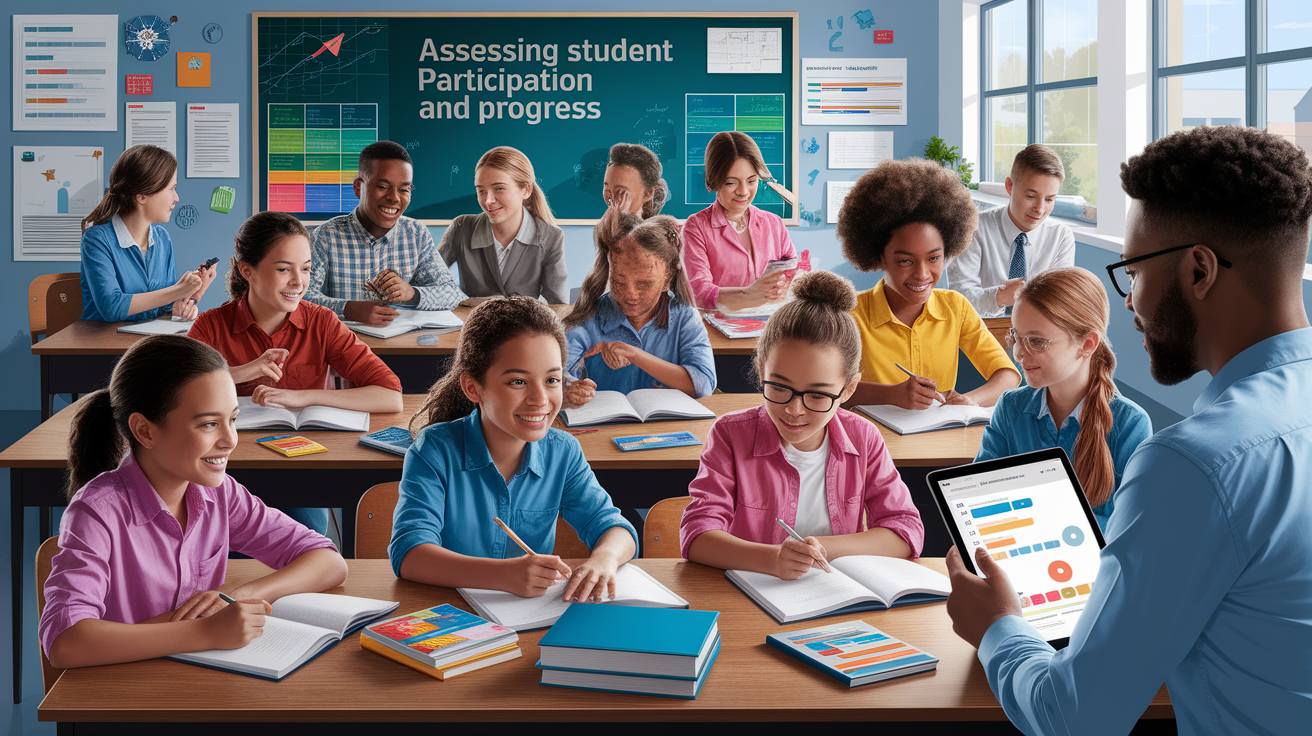
Consider blending formative assessments—like quick polls or low-stakes quizzes—with summative tasks that demonstrate comprehensive mastery. Use your virtual classroom to track participation, log discussion contributions, and review submitted work. Build in feedback loops that benefit both modes, such as peer review in forums and instructor comments during office hours.
- Online: Auto-graded quizzes, discussion board contributions, formative polls.
- In-person: Group presentations, hands-on demonstrations, collaborative problem-solving tasks.
- Hybrid: Portfolio projects combining work from both environments.
Bridging the Divide: Your Next Steps
You’ve got the tools, the strategies, and the inspiration—now it’s time to put it all into practice! Start small, applying a few best practices for hybrid teaching to your next course. Use ongoing student feedback to fine-tune lesson pacing, adjust technology integration, and tailor your approach to class needs.
Remember, hybrid learning is an evolving journey. Each group of students will have unique preferences, strengths, and challenges. By staying flexible and open to experimentation, you’ll find the perfect rhythm for balancing in-person instruction and online education. Keep your lessons cohesive, your assessments fair, and your creativity flowing—because in a hybrid classroom, innovation really is your best teaching tool!

